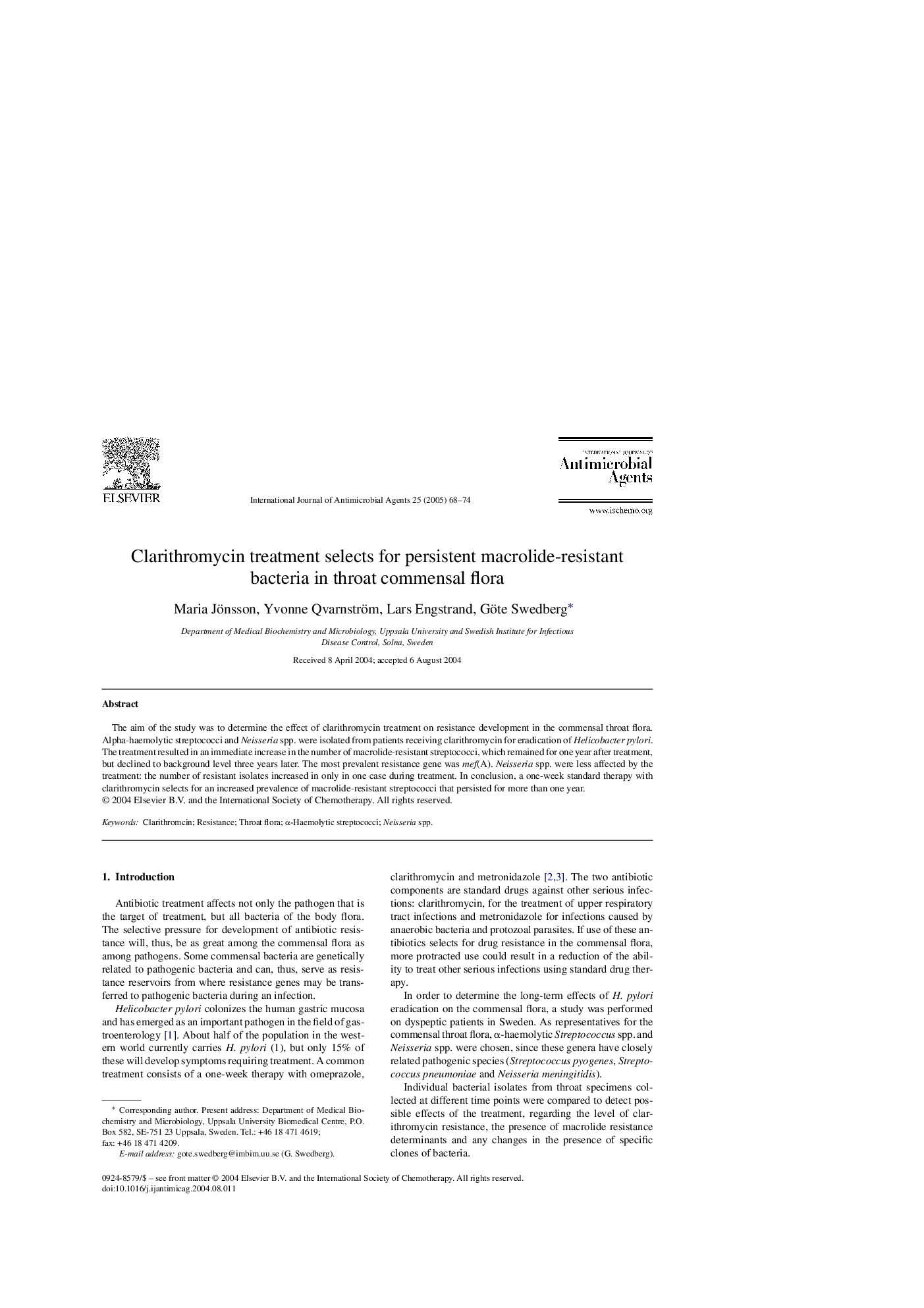| Article ID | Journal | Published Year | Pages | File Type |
|---|---|---|---|---|
| 10028018 | International Journal of Antimicrobial Agents | 2005 | 7 Pages |
Abstract
The aim of the study was to determine the effect of clarithromycin treatment on resistance development in the commensal throat flora. Alpha-haemolytic streptococci and Neisseria spp. were isolated from patients receiving clarithromycin for eradication of Helicobacter pylori. The treatment resulted in an immediate increase in the number of macrolide-resistant streptococci, which remained for one year after treatment, but declined to background level three years later. The most prevalent resistance gene was mef(A). Neisseria spp. were less affected by the treatment: the number of resistant isolates increased in only in one case during treatment. In conclusion, a one-week standard therapy with clarithromycin selects for an increased prevalence of macrolide-resistant streptococci that persisted for more than one year.
Keywords
Related Topics
Life Sciences
Immunology and Microbiology
Applied Microbiology and Biotechnology
Authors
Maria Jönsson, Yvonne Qvarnström, Lars Engstrand, Göte Swedberg,
